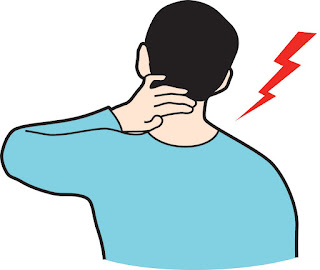Neck pain is a typical complaint that leads to a doctor's appointment. Neck discomfort is almost often mechanical, meaning it stems from a problem with the muscles, tendons, or ligaments. Neck discomfort is split into two types: traumatic (as in a car accident) and non-traumatic (as in a migraine) (as in when your neck starts hurting with no known cause). The topic of this essay is non-traumatic mechanical neck pain.
The majority of non-traumatic mechanical neck discomfort is produced by a complicated postural distortion that starts in the thoracic region and shoulders and progresses upward, creating compensations. People's shoulders are typically positioned front and rotated inward due to a greater forward curvature in their mid-back area.
The neck is dragged forward and down as a result of this. The head is driven into the extension to remedy this, allowing you to look ahead rather than down at the ground. For the neck muscles, this position is unnatural, ineffective, and overpowering. If the muscles are not addressed, they grow weak and tight, putting extra strain on the ligaments of the neck, including the spinal discs, and causing pain. Serious diseases such as spinal disc herniations, prolapses, bone spurs, spinal arthritis, and even nerve conditions affecting the upper extremities and headaches might develop as a result of this. We've all seen the elderly person walking while bending over and looking down at the ground. This might be the end for any of us if it is not addressed.
The following are some of the risk factors for this condition:
1. Spending too much time in front of a computer
3. Poor posture owing to mental concerns or bad habits
2. Excessive reading
4. Previous back or shoulder injuries
5. Tobacco Use
6. Lack of physical fitness
The good news is that if identified early enough, this illness can be successfully treated without the need for drugs or surgery. It's critical to realize that this condition must be treated, not cured and that it must be controlled for the rest of your life. Combining chiropractic treatment with therapeutic exercises is the most effective treatment for this disease. Chiropractic treatment increases neck and shoulder mobility as well as the nervous system's ability to interact with muscles. Therapeutic exercises that are properly chosen will strengthen the mid-back and neck muscles while stretching the chest muscles.
This treatment will result in less neck pain, better posture, and a lower risk of additional spinal degeneration, which could necessitate long-term medication or surgery.

